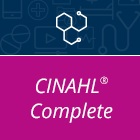Nursing & Health Sciences Research Journal
Abstract
Introduction: Midodrine, an α-adrenergic agonist approved for orthostatic hypotension, is used off-label for hypotension in patients with heart failure with reduced ejection fraction (HFrEF). However, its prevalence, clinical outcomes, and risks in HFrEF remain unclear. Theoretically, adding midodrine to HFrEF patients’ medication regimens may facilitate up-titration of guideline-directed medical therapy (GDMT) by attenuating its corresponding hypotensive effects. This study aims to assess the concurrent use of midodrine and β-blockers in patients with HFrEF to allow the initiation or up-titration of GDMT. Methods: This was a multisite, retrospective chart review of adult patients with HFrEF who received concomitant treatment with midodrine and a β-blocker from March to June 2022. Patients were excluded if they were pregnant, had a left ventricular ejection fraction (LVEF) ≥ 50%, or received concomitant therapy for less than 48 hours. Primary outcomes included tolerance of β-blocker initiation and up-titration with midodrine. Secondary outcomes included initiation and continuation of midodrine and β-blockers or additional GDMT upon discharge. Results: Twenty-six patients were included. All patients on midodrine were initiated on β-blockers, and 73% (n = 19) tolerated β-blocker dose titration. An improvement in mean systolic blood pressure (SBP) from 104 mmHg to 112 mmHg was observed. Nineteen (73%) patients were discharged on midodrine and β-blockers, while 7 (27%) patients were discharged on β-blockers alone. Discussion: The initiation of midodrine improved mean SBP and enhanced tolerability of β-blockers in HFrEF patients. Further studies with larger sample sizes are necessary to evaluate midodrine's long-term risks and benefits in HFrEF.
Recommended Citation
Ruiz, M. A., Martinez, D., Falli, M., de Almeida, K., & Gopalani, R. B. (2023). Impact of Midodrine on Optimization of β-blocker Therapy in Patients with Heart Failure with Reduced Ejection Fraction. Nursing & Health Sciences Research Journal, 6(1), 5-11. https://doi.org/10.55481/2578-3750.1174
Creative Commons License

This work is licensed under a Creative Commons Attribution-NonCommercial-No Derivative Works 4.0 International License.


